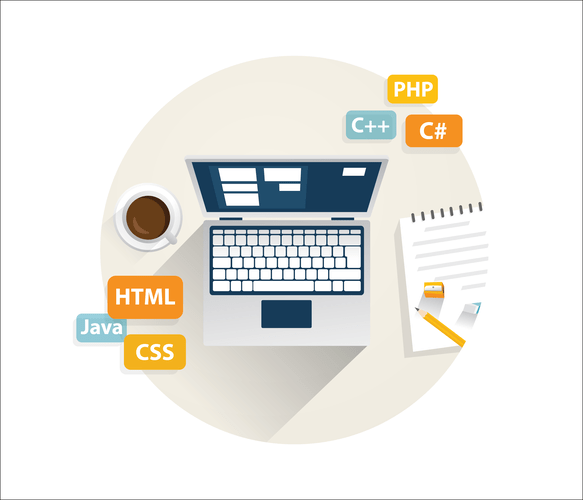These vulnerabilities then need to be patched by the development team, a process that may in some cases require significant rewrites of application functionality. Vulnerabilities at this stage may also come from other sources, such as external penetration tests conducted by ethical hackers or submissions from the public through what’s known as “bug bounty” programs. Addressing these types of production issues must be planned for and accommodated in future releases. Once you’ve completed the requirement planning phase of the secure software development lifecycle, you can begin to design the software.

BAE said in a statement that the funding will cover development work up to 2028, enabling the company to begin detailed design and start to procure long-lead items. The System Development Life Cycle encompasses a series of interconnected stages that ensure a systematic approach to system development. The stages include Planning, Analysis, Design, Development, Implementation, and Maintenance.
System design and architecture
Metroscope’s digital twin solutions improve efficiency and reduce emissions by monitoring and analysing industrial assets. To achieve a scalable, reliable, and highly secure solution, Metroscope chose to run its platform on Microsoft Azure technology. Metroscope is taking advantage of Azure Kubernetes Service (AKS) to deploy applications along with Azure Database for PostgreSQL and Azure Cosmos DB to manage data. During this stage of the system lifecycle, subsystems that perform the desired system functions are designed and specified in compliance with the system specification. An SDLC is a conceptual outline of the software creation process, while Agile is a project management methodology that focuses on a cyclical, iterative progression while building software. A big bang starts with little planning and quickly moves to the coding stage.

The council also heard the results of the Orion CDR, completed at the program level in October 2015. The evaluation assessed the primary systems of the spacecraft, including the capsule’s structures, pyrotechnics, Launch Abort System jettison, guidance, navigation and control and software systems among many other elements. To meet this objective, phase two of the project builds on proven Metroscope diagnostic technology already in use at more than 60 NPPs. It also builds on the existing phase one application to a high-temperature gas reactor auxiliary system using input data from the Argonne National Laboratory Natural Convection Shutdown Heat Removal Test Facility (NSTF). This technology saves operation and maintenance costs for the current LWR fleet and may result in greater per-MWe savings in advanced reactors.
NASA’s Spitzer, TESS Find Potentially Volcano-Covered Earth-Size World
This process goes on until customers have no more negative feedback, after which the team gets a customer-driven requirements analysis and starts developing the final product. Supported by industry-leading application and security intelligence, Snyk puts security expertise in any developer’s toolkit. This phase translates in-scope requirements into a plan of what this should look like in the actual application. Here, functional requirements typically describe what should happen, while security requirements usually focus on what shouldn’t.
Traditional practices of testing for vulnerabilities in production are no longer sufficient for securing your applications. As the software industry has evolved, the types of attacks have evolved as well. Deploying and maintaining a secure application requires securing every step of the application development process. The system development life cycle process has also evolved into different systems such as agile software development, which enables development teams to work in a structured and efficient environment. The System Development Life Cycle (SDLC) or the application development life cycle, for example, is an essential structure in the field of software engineering.
Phases
In this phase, Developer needs to follow certain predefined coding guidelines. They also need to use programming tools like compiler, interpreters, debugger to generate and implement the code. In this third phase, the system and software design documents are prepared as per the requirement specification document. For the spacecraft’s first mission on the SLS rocket, ESA (European Space Agency) is providing Orion’s service module, which powers, propels, cools and provides consumables like air and water in space. Results from ESA’s service module design review, which began this month, will be assessed and incorporated into Orion development and integration plans later this summer.
- Modern-day practices now focus on increasing the pace of innovation while continuing to build well-functioning software applications.
- This phase often includes automated tools like CI/CD pipelines to control verification and release.
- Users may require orientation and instruction before they can effectively use the technology.
- It is also the phase where the team figures out what the finished product will look like once development is completed, omitting potentially risky design choices along the way.
- Let’s take a close look at every typical phase of an average software development life cycle.
Quality software from this process can help companies in the software engineering industry and other businesses involved in information technology. System Design is a crucial stage in the SDLC as it bridges the gap between requirements analysis and system development. It transforms user needs and functional specifications into a detailed technical plan that guides the development team. Proper system design ensures that the developed system aligns with the desired functionality, performance, and scalability requirements. This stage involves deploying the developed system into the production environment. This includes activities such as system installation, data migration, training end-users, and configuring necessary infrastructure.
Incremental Model in SDLC
The design of the software should be in line with the previously conducted planning and should be done in preparation for deployment in the real world. Following the system development life cycle is crucial each time system development phase a new project or phase of a software project is released. Doing so gives teams a systematic approach that in turn enables them to come up with new solutions to existing issues in a standardized and controlled manner.

This empowers developers to take ownership of the overall quality of their applications, which leads to more secure applications being deployed to production. System Development & Demonstration programs (BA-5) have passed Milestone B approval and are conducting engineering and manufacturing development tasks aimed at meeting validated requirements prior to full-rate production. This BA is characterized by major line item projects and program control is exercised by review of individual programs and projects. A logical progression of program phases and development and production funding must be evident in the FYDP consistent with the Department’s full funding policy. The SDLC ensures that project development is sufficiently integrated to provide adequate security in the resulting system or application. The SDLC should be documented and project development activities should conform to them; all should be guided by written standards and procedures for each phase.
Phase 4: Verification
Prepare a formal project request to initiate all system development and integration activities. The request should include the project objectives, users of the system or application, criticality in terms of confidentiality, integrity and availability, and key time frames for completion. Developing a fully-functioning piece of software and information system is a monumental undertaking.
After this cycle, developers will have a functional component of the final product. Showing the goods off to potential buyers and end-users is possible with the iterative approach. Developers can adjust their course based on feedback from customers and find out whether they’re heading in the correct route. The software industry isn’t the only one benefiting from the iterative paradigm. However, to build a basic understanding of the SDLC framework, a beginner developer should have a closer look at the detailed description of the stages.
Software vs. System Development Life Cycle
Users may require orientation and instruction before they can effectively use the technology. Depending on the complexity of the system, the implementation stage might take a lengthy time. If the team discovers a defect, the code goes back a step in its life cycle, and developers create a new, flaw-free version of the software. The testing stage ends when the product is stable, free of bugs, and up to quality standards defined in the previous phases.

